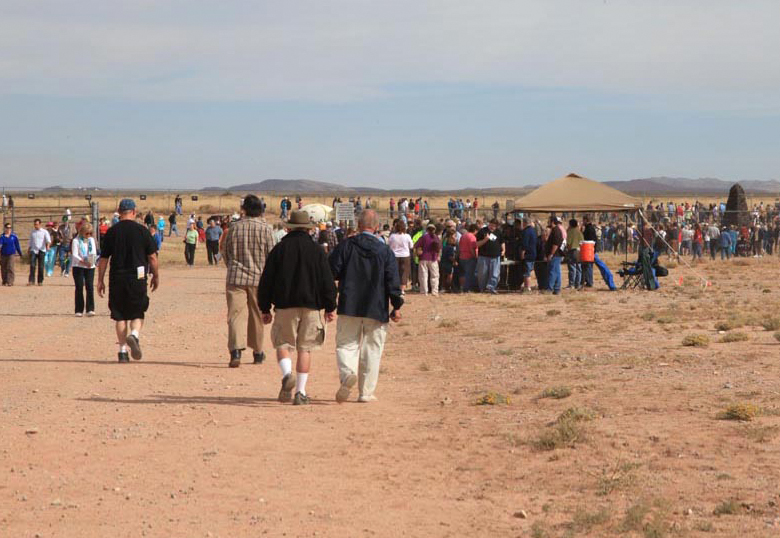It has been 70 years since the world was introduced to the devastating power of an atomic bomb, and as the anniversary of the first detonation approaches, a University of Lethbridge professor is embarking on a unique project that examines the growing global phenomenon of atomic tourism – one that attracts millions of visitors each year to significant sites of atomic history.
Faculty of Fine Arts professor and artist Mary Kavanagh is in the early stages of a multi-year project that examines atomic tourism as enacted at Trinity, New Mexico, where the first nuclear device was successfully tested on July 16, 1945 near the end of the Second World War. Three weeks later, the United States dropped successive atomic bombs on Hiroshima and Nagasaki, Japan.
Kavanagh has twice been to Trinity, laying the groundwork for her research project. Situated deep in the desert on the White Sands Missile Range in Southern New Mexico, the site is opened to the public only one day per year (the first Saturday in April) and attracts 3,000 to 4,000 visitors annually. Last year, Kavanagh conducted 45 on-site interviews during the annual Open House and assembled a series of compelling video portraits of the people who visited. Kavanagh will return to continue filming at the Trinity Open House on Apr. 4, 2015.

“Rather than focusing on the historic significance of Trinity, which is well understood, my interest resides in documenting the living history of the site and responding to its continuing cultural and social relevance,” says Kavanagh, whose project is funded by the Canada Council for the Arts and the University of Lethbridge’s Office of Research & Innovation Services. “The interviews I have so far conducted reveal a highly charged, emotional and psychological connection to this place and to the broader nuclear story that continues to resonate for many people. The steady lineup of visitors willing to share their insights in front of the camera was stunning.”
From war veterans to history buffs, peace activists and cancer survivors, Kavanagh has encountered a full range of motivations for visiting. She even met a young couple who exchanged wedding vows at ground zero.
“I am struck by the way people described the site, calling it holy or haunted, a prison, a celebration, sobering and festive. Perhaps it is all these things at once,” says Kavanagh. “We are still nowhere near collectively coming to terms with our relationship to nuclear technology, and though 70 years have passed since the bombs were dropped on Japan, the memory still haunts us, the Cold War quietly simmers, nuclear industry continues to wreak havoc, and a tension remains, carried in the bodies of all of us.”
The project, which will unfold over the next five years and culminate in 2020, the 75th anniversary of the bomb, will ultimately result in a feature-length documentary film.
Atomic Tourist: Trinity follows Kavanagh’s 2012 research and exhibition project entitled Atomic Suite – a cinematic video projection and photographic installation that addresses her time spent with the U.S. military in Wendover, UT. Kavanagh also recently presented a video project, Track of Interest: Exercise Vigilant Eagle 13, at the 2015 Alberta Biennial of Contemporary Art. It was developed from her participation in the Canadian Forces Artists Program.
Since 2007, Kavanagh has been advancing a body of work that examines sites connected to the development of weapons of mass destruction, from the first atomic bomb, to cold war nuclear and chemical weapons testing programs, to the disposal of nuclear weapons stockpiling.
“I have then been interpreting and inscribing the impact of this legacy on the human/animal subject – vulnerable bodies situated within socioeconomic systems that render capital before ecology or ethics.”
